Sewing with Heavy Duty Thick Fabrics
16th June, 2023
Thinking in sewing with heavy-duty thick fabrics? Denim, canvas, and upholstery material are examples of thick materials that can be difficult to sew with but also very gratifying.
In this blog post, we will guide you through the process of sewing with heavy-duty thick fabrics, providing you with valuable insights and making it accessible for everyone to sew with it.
Sewing with Heavy Duty Thick Fabrics
Compared to dealing with lighter textiles, sewing with heavy-duty thick fabrics requires some changes.
To guarantee the stitches are secure and the completed item or project withstands the test of time, these materials require sturdy procedures.
The following suggestions will enable you to produce results that will meet your expectations, whether you are making denim pants, canvas bags, or furniture upholstery.
Choosing the Right Needle and Thread
It’s important to choose the right needle and thread when sewing with heavy duty fabrics.
Choose a heavy needle to help you cut through dense materials. For example, for denim and canvas, aim for a needle size of 16/100 and needle type of Denim/Jeans. On the other hand, fabrics like leather and suede, a needle size of 14/90 or 16/100 and Wedge Point as needle type would do the job.
Select a heavy-duty thread that complements the weight and colour of your fabric. When choosing make sure it is robust enough to stand up to the pressure and strain of thick textiles.
Tension and Stitch Length
To achieve balanced stitches on thick fabric, you may need to adjust the tension and stitch length settings on your sewing machine.
Experiment with different settings on scrap fabric until you find the optimal combination that produces even stitches without puckering or gathering.
For heavy duty fabrics, the suggested stitch length is between 3.5 and 4.0 and the stitches per inch are between 6 and 7.
Cutting and Marking the Fabric
When working with thick fabric, precision is key! Like, literally!
Use sharp fabric scissors or a rotary cutter (be careful!) to cut your fabric, ensuring clean and accurate edges.
Mark the fabric with chalk or washable markers to indicate important reference points, such as darts, pleats, or buttonholes.
Don’t rush and take your time when double-checking your measurements before cutting.
Pinning
When pinning it, opt for longer pins with a larger diameter to hold the layers together securely.
Alternatively, you can use clips or fabric weights to keep the fabric in place during sewing.
For added stability, consider basting the fabric layers together before sewing the final seams. And if you are wondering, it can be easily removed later without leaving permanent marks.
Topstitching
What is Topstitching anyways? Topstitching is a sewing technique where stitches are made on the outside of a fabric, typically along edges or seams, for both decorative and functional purposes.
To achieve neat and professional-looking topstitching when sewing with thicker fabrics, use a longer stitch length and consider using a topstitching needle.
You could also include edge finishing techniques such as zigzag stitching, serging, or binding where fraying could be prevented and add that magical touch to your seams.
Pressing and Ironing
Prep Your Fabric: Before pressing, ensure that your fabric is clean and free of any debris or loose threads. This will help prevent any unwanted marks or stains during the pressing process.
Test the Heat: Heavy-duty fabrics can vary in their tolerance to heat. Start by testing a small, inconspicuous area of the fabric with your iron on a low heat setting. Gradually increase the heat if necessary, but always prioritize the fabric’s safety.
Steam: Steam can be a powerful ally when pressing heavy-duty fabrics. If your iron has a steam function, use it to your advantage. Hold the iron slightly above the fabric and release bursts of steam to relax the fibers and make them more pliable. Be cautious with synthetic fabrics that are not steam-friendly and follow the manufacturer’s guidelines.
Press, Don’t Glide: When pressing heavy-duty fabrics, avoid gliding the iron back and forth. Instead, lift the iron and press it firmly onto the fabric for a few seconds, then lift and repeat. This technique helps to set the creases and gives you more control over the heat and pressure applied.
Focus on Seams and Edges: Pay extra attention to pressing the seams and edges of your heavy-duty fabric. Use a tailor’s ham or a rolled-up towel to support curved areas, ensuring that the seam allowances lay flat and the edges are crisp. Take your time and press from both sides of the fabric to achieve optimal results.
Avoid Overpressing: While pressing is crucial for shaping and setting seams, be cautious not to overpress heavy-duty fabrics. Excessive heat and pressure can flatten the fabric, resulting in a stiff and lifeless appearance. Maintain a balance between achieving smoothness and preserving the fabric’s natural drape and texture.
Cool Down and Set: After pressing, allow the fabric to cool down and set before handling or moving it. This helps the fibers retain the pressed shape and reduces the risk of accidental creasing or distortion.
Conclusion
We get a lot of questions about sewing with heavy duty fabrics and it is understandable why. It looks intimidating but we are here to show everyone that it is not!
Using the right techniques and employing proper care, you can confidently create stunning projects that stand the test of time.
Experiment with topstitching, practice edge finishing techniques, and become familiar with pressing and troubleshooting methods.
Test and learn from your mistakes, but most importantly, enjoy the process!
Visit us at UK Fabrics Online to check our Heavy Duty range!
If you have any questions, email us or leave a comment here.
Hope you enjoy this one.
Thank you!
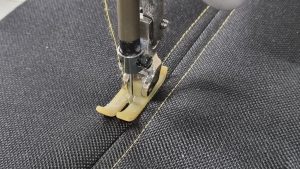
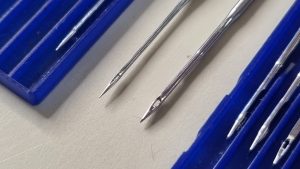
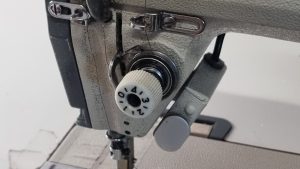
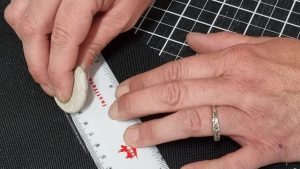
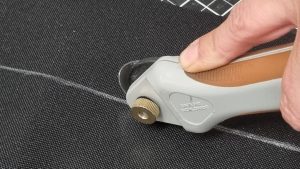
Leave a Reply